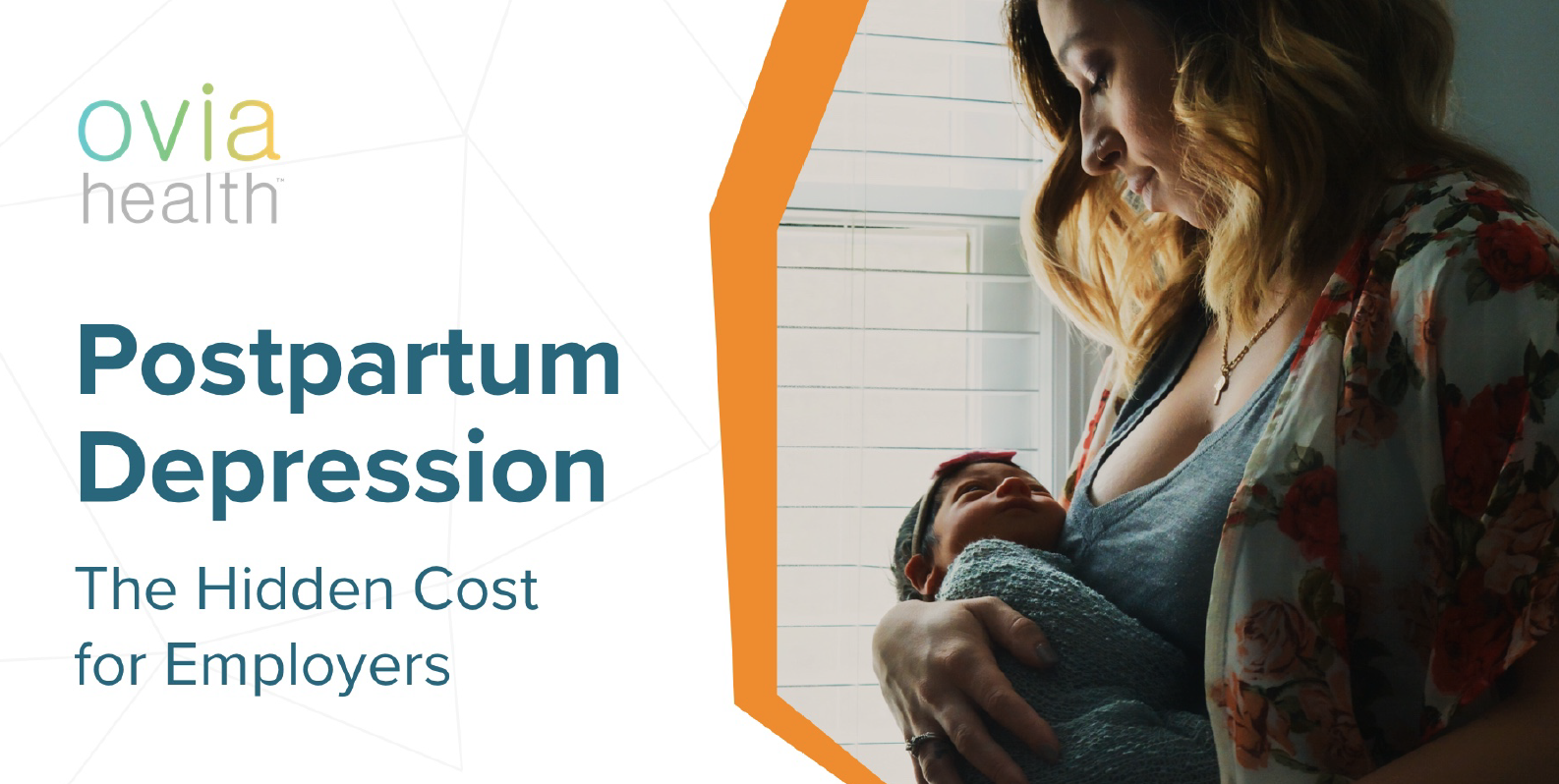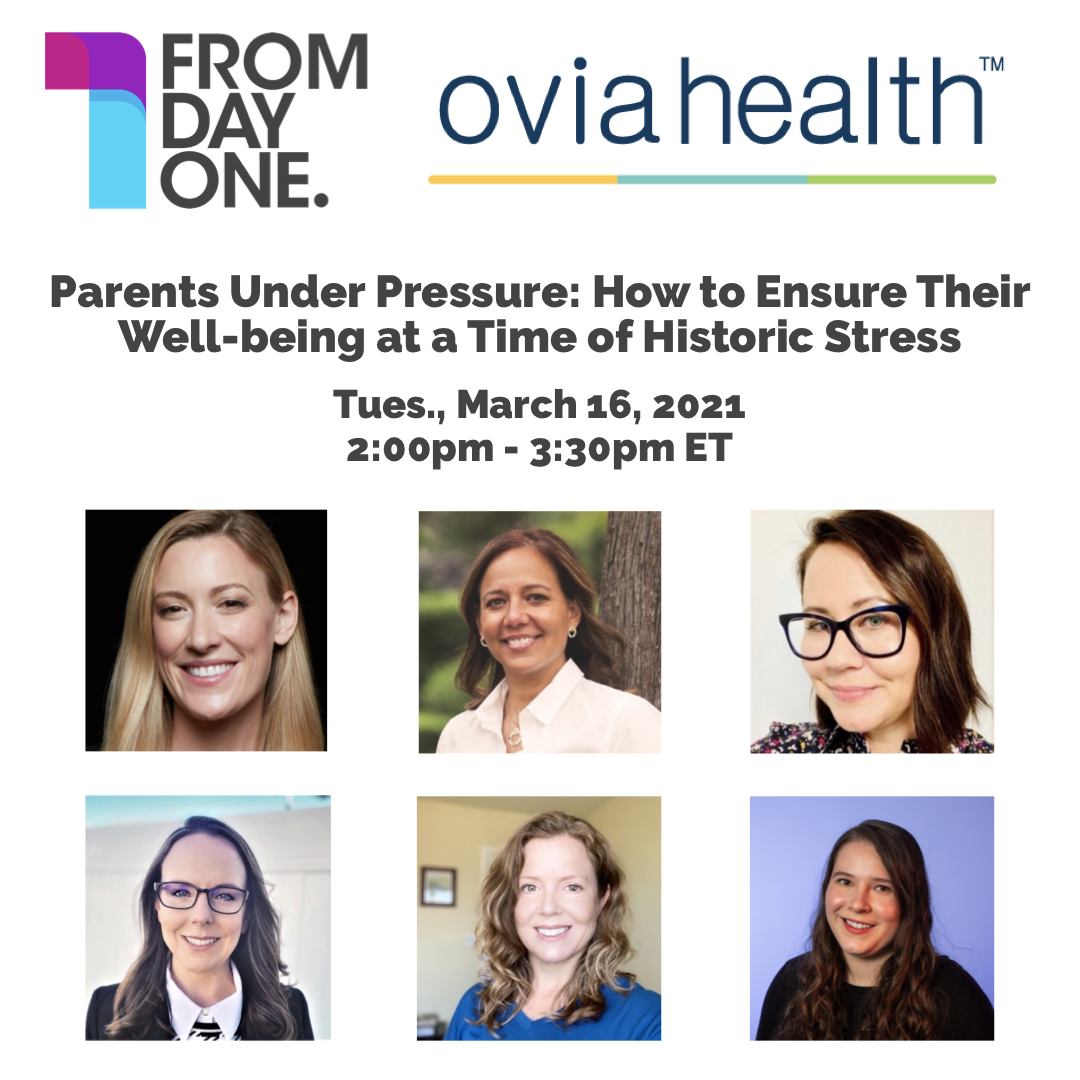Transitions: Reimagining benefits design, strategy and access in a post pandemic America
Luke
Prettol
Health
& Wellness Benefits
Manager
Champion
X
In the inaugural episode, Champion X's Health and Wellness Benefits Manager, Luke Prettol, shares his thoughts on care navigation, patient access, parental mental health and the stresses of the pandemic. He also discusses what he thinks the future of digital health may be, and how HR leaders need to redesign and reimagine benefits to be more human-centric moving forward.
Check
out other podcast episodes and
content:
If you enjoyed this
podcast episode, check out the full OviaAsks
podcast series, or other content, for more
insights from leading employer
organizations.
Webinar: Parents Under
Pressure
Leaders from GAP Inc,
Colgate Palmolive, KinderCare and Intermountain
Healthcare share thoughts on improving parental
mental health and support.
Podcast
Transcript:
Transitions: Reimagining
benefits design, strategy and access in a post pandemic
America
McKenzie: Hello and welcome to our first episode of the newly founded Ovia Asks podcast. A series where Ovia sits down with industry experts from across the employer, health plan, healthcare and benefits space to discuss pressing trends and the future of HR strategy and care. I’m McKenzie Curran with Ovia Health, and today, we have with us Luke Prettol, Health & Wellness Benefits Manager from Champion X. Welcome Luke, we’re happy to have you today.
Luke: Thanks it’s great to be here.
McKenzie: Before we begin, do you want to tell us anything about yourself?
Luke: So I’m Luke Prettol, I manage the health and wellness benefits space for Champion X. Today I’m excited to talk a little more about benefits design, HR strategy, how care and benefits have changed since the pandemic, and where employers should be shifting their focus and benefits portfolios to be successful, and employer employees to be successful, in the future.
McKenzie: Thank you so much for that, Luke. We’re so happy to have you here today, and I think your experience makes your perspective even more valuable.
Which brings me to today’s topic -- how the industry should be reimagining benefits design, strategy, and access to care to fit our new world. What can you do and what do employees really need to be successful today and tomorrow?
So, Luke, even before the pandemic hit, the industry was clearly moving in a direction that put the patient (or employee) at the center of it all. Now that includes more convenient virtual care options, but also patient responsibility for benefits navigation, financial responsibility, as well provider choice. But, what I think we fail to ask ourselves is, is the benefits world easy enough for your employees to navigate effectively today?
Luke: There’s really a few aspects of what’s been confusing, and where navigation is needed:Health care - getting high-value care
- Health insurance - making sense of the health care dollars you spend
- Health improvement - building the best you
That’s just healthcare, but there are all sorts of HR policies, disability programs, social norms, etc. that someone might have to navigate as well!
McKenzie: What can organizations do to help people navigate care and those complex policies and programs you just mentioned - any examples?
Luke: I think there are generally two approaches.
- First, you can put solutions in place that broadly look to serve each of those areas that need navigation, for example a wellness vendor that’s focused on health improvement.
- Second, you can put solutions in for a specific care path that has unique challenges to provide a more holistic navigation, for example Ovia Health to navigate fertility, pregnancy, or parenting. My favorite specific example is that most dental insurance programs include a second dental cleaning when a member is pregnant because oral health is really critical during pregnancy -- that’s so specific and it’s illustrative of why there is a need for navigation in a specific care path. Keep in mind, these two approaches aren’t mutually exclusive, and really they can operate hand-in-glove.
McKenzie: Thanks Luke, speaking of pregnant employees and new parents. The past year has tested many people - especially parents. Recent studies from the NYT as well as our own data suggest we may see a 60% increase in mental health issues like anxiety and depression for families due to COVID-19. In addition to that, the Department of Labor estimates nearly 2.3 million women have left the workforce since the pandemic started. Clearly people are struggling with mental health and their careers today. How are organizations rising to meet this challenge?
Luke: These two concepts are uniquely connected during the pandemic as women leave the workplace to be unpaid caregivers for their parents, children, etc. There are compounding issues here too: maybe she is managing funeral arrangements and grieving for a parent who passed away while overseeing her children’s remote learning all while not receiving a paycheck and unsure what the long-term impact will be on her career. To make it worse, the impact of the disease is several times higher for communities of color and low-wage earners.
Candidly, I don’t think organizations can do enough to fully meet all these challenges, but I think there are some things that we should be doing if we care about the health and wellbeing of our employees.
First, the line between work and life was already blurry, but it’s pretty much erased now. There’s not a Zoom call that goes by without someone’s kid, many times one of mine, making an appearance, and you know what? We’re ok. That’s ok now. And actually, that’s great! We’re finally forced to recognize that employees have families and they are caregivers, and employers should work to provide support in those areas.
To that point, a human-centric approach to benefits design is absolutely critical as there are unique needs out there, and as employers it’s massively important to find partners that will rise up to that challenge of providing the individualized support our employees need.
McKenzie: That’s a good point. I feel like I learned more about my colleagues and their home lives and kids in just a few short months of Zoom that I ever did pre-pandemic. Now, you mentioned that employers should take a human-centered approach, and there were some ways they could provide support. Can you be a bit more specific? What can organizations do to better support employees - especially parents - today and long term?
Luke: Every organization including ChampionX is building or revising a flexible work policy of some sort because just like everyone else, our employees are demanding more flexibility! There’s an even more important need to focus on preparing the organization and managers specifically to be flexible while not sacrificing the performance of the organization. Flexibility is not the enemy of performance, but it requires that managers become equipped with tools, resources, and knowledge to build resilient work experiences that are both flexible and high performing. Organizations will need to adapt!
This will become even more critical as those women who left the workforce will come back. They have demonstrated their ability to be nimble and deliberate, and they will be the ones who will be the best at optimizing that flexibility for performance.
McKenzie: Yes I totally agree. You mentioned that organizations will need to adapt, and continue to change as women come back. How and when do we expect them to return? Are there things we can do to speed the process up -- will we need to change or improve how we address and support childcare options? Overall, I guess what I’m asking is how do you think benefits will have to transform and evolve to keep up with these new expectations, because kids and families aren't going away.
Luke: That’s a perfect example of where flexibility could upend what we think of as progressive today. On-site childcare has been important because it allowed the parent to physically go into the workplace. But perhaps that parent doesn’t need a full care replacement because they don’t have to go into the office and work the standard “9-5” hours. Again, the line between work and life is getting very fuzzy, so as benefits leaders we need to reorient our actions around our employees. It’s really exciting!
McKenzie: That’s such a good point and answer. Now, we’ve talked a lot about how we need to change, but not much about how care delivery has changed. And you can’t really begin to discuss that without talking about virtual care. It has been a fringe part of care for so long, and in 2020 we really saw virtual everything, especially care, step into the spotlight in many ways. How does telehealth fit into all of this? Do you think we need to continue to evolve virtual care? Is it doing what we need it to today?
Luke: Today telehealth is typically considered as a poor substitute for an in-person office visit or an overqualified triage solution. However, I think of digital health differently and really starting to play a fascinating role as a force multiplier for quality health care, where strategically incorporating digital tools can improve health and wellbeing outcomes - in the case of Ovia it’s not replacing the important work of OB/GYNs or pediatricians, but augmenting that care with 1-on-1 coaching, AI-driven interventions, and expertly guiding families which results in a healthy baby or a mom who more gracefully transitions back to work.
Let me give a specific example about the difference between telehealth and digital health. Last year we implemented $0 cost telemedicine visits which saved us roughly $30,000 which isn’t really worth anyone’s time. Now, I recently talked to one of our members who is enrolled in Virta Health, which is focused on diabetes reversal through an ADA-approved first line treatment to utilize connected devices, 1-on-1 coaching, and clinical oversight to provide absolutely stunning results. This member was able to eliminate over $5,000/month in prescription drug costs (these are costs paid by ChampionX). In 6 months we’ll save $30,000 just on that member not having maintenance prescription drugs. We add in de-escalation of diabetes treatment therapies, elimination of diabetes complications, reduction of co-morbidities (cholesterol, blood pressure, BMI), increased energy and work productivity, and improved overall wellbeing – forget about the money for a minute -- that’s real meaningful improvement of that person’s life! What I like about these types of solutions is that without technology it would have been impossible to create a multi-disciplinary clinical team that has several data points each day and provides personalized information for the patient, so this movement is really about improving health care delivery and outcomes.
There was an interesting pair of studies by Rock Health and the Stanford Center for Digital Health on Digital Health Consumer Adoption and Kantar Health’s Social Determinants of Telehealth that showed that in 2020 we saw a growing disparity where high-income earners, middle-aged adults, and highly educated used telemedicine more, but left behind low-income earners, lower educated, and rural patients. However, the bright spot was an increase in monitoring women’s health and chronic conditions. There is a lot to consider, and employers need to stay vigilant to ensure the equitable application of digital health.
McKenzie: Wow, that is a lot, both frightening and exciting. And speaking of frightening, it's been said 2020 was a year of chaos and change, and I've heard folks call 2021 and beyond, a time of transition. I assume the same is true for how organizations. How can employers transition to a post pandemic workplace, and transform their policies, compensation and benefits packages?
Luke: Well, first let me say that while some organizations are starting to address those topics, they are by no means solved. Many of those are still buzz words because they are legitimately top of mind, but we have a long way to go.
You called it a benefits portfolio, but I come from a more blue collar industry so I think of it as a benefits toolbox! Let me play in that analogy a bit. A toolbox has a wide range of resources available, and some tasks may require a lot of tools or maybe just one specialized tool. A savvy technician knows what tools need to be available in their toolbox and also recognize the changing needs of their tasks.
I know I’m looking to curate the current benefits portfolio to fit a post-pandemic world. Many of us had built a beautiful 5-year benefits strategy, and it really is being upended right now! What is changing is more flexibility, so we need to provide more ways to interact, be engaged, and as I said before, maybe the solutions look completely different. There is also this more holistic consideration of a person so there will be more interest/demand for family, parenting, and caregiving support from employers.
McKenzie: How do we need to transition and reimagine what is offered to meet these new standards?
Luke: It’s absolutely critical to have your north star be your members. For example, a recent Pew Research study showed that 62% of Americans with a four-year degree have been able to work remotely, yet for those without a four-year degree only 23% have said they could work remotely.
I’m saying this to showcase how important it is to consider the different people in your organization. Not to throw cold water on fresh ideas, but to consider the different experiences during the pandemic.
McKenzie: Well, I think that’s all the time we have for today. Thank you so much for all of your insights. They’ve been invaluable. And thank you to our listeners for tuning in today. I hope you’ll join us for our next podcast episode with Asurion where we’ll be discussing their success with Diversity, equity and inclusion efforts, the challenges and opportunities they’ve faced, and the advice they’d give other employers in the industry.


.png)
